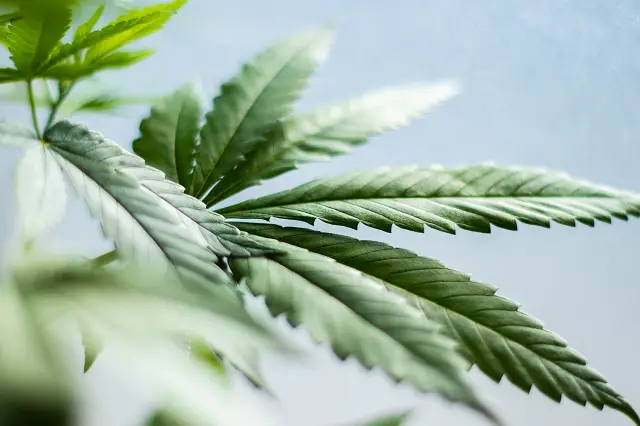Over the past few years, the healing properties of cannabis have started to become more apparent to the masses. Finally, industry and government are testing the benefits of cannabis and its various compounds. While cannabis still has a long way to go to be accepted in all states or the federal government, the science is starting to back up what many people have said for years.
If you’re struggling with any kind of ailment, you may be looking for natural remedies to help solve your problems, cure your pain, or otherwise treat your issues. It may be that cannabis, THC, or CBD treatments could work for you. However, there are a few things to understand regarding cannabis, its legality, and what the different compounds are best for. Let’s take a look at everything you need to know about cannabis healing products.
Cannabis and the Law
Depending on where you live in the US, cannabis products of any kind may each have a different legal status. In 36 states, medical marijuana is currently legal, while in 19 of those states, cannabis is legal for medical and recreational use. This means the purchase of cannabis buds or products derived from cannabis for medical and recreational use.
CBD, the non-psychoactive substance found within cannabis, is legal in 50 states. This is because it can be derived from hemp, which was removed from the controlled substances list in 2018. However, rules still vary from state to state, where some states require medical prescriptions and others do not. It’s a constantly evolving situation, with the rules constantly in flow and discussion. Just be sure that wherever you purchase your cannabis products, you are doing so legally.
THC vs CBD
THC and CBD are the two main cannabinoids found in marijuana. Both are known to have various healing properties and potential medical benefits. There are some key differences between the two, which is why their legal status varies so much.
THC is a psychoactive compound – arguably the reason why cannabis was made illegal in the first place. When THC is ingested, it enters the bloodstream and eventually the brain. This can cause feelings of relaxation, euphoria, and other psychoactive results. This is what makes recreational marijuana very popular! However, CBD does not have psychoactive effects, despite it also entering the body in the same way. It simply does not affect the brain’s canonical cannabinoid receptors in the same way.
CBD for Joints
One of the main benefits and uses of CBD is in topical creams and ointments. For example, salve with 1,000mg of CBD has been shown to help reduce inflammation in joints when applied directly to the skin. This is due to CBD’s well-documented anti-inflammatory properties. Many studies have shown that CBD is as effective as pharmaceutical medications for treating inflammation, while also reducing chronic pain associated with joint issues.
CBD can also be taken in oil form for the same reason. When taking oils as opposed to rubbing ointment on the skin, people often simply place a few drops under their tongue and let it dissolve. Oils are usually flavored since natural CBD oil is very bitter.

CBD for Anxiety and Mental Health
CBD oils seem to have other benefits, too. One of which is the relief of mental health issues such as stress and anxiety. THC is often thought of as the best choice for anxiety and depression, due to its more intense psychoactive properties. However, if THC is not available where you are, CBD is just as effective.
With around 30% of American adults suffering from anxiety or depression, it’s no surprise that people have found benefits from products with CBD. Studies have shown it works too. How? Well, though it doesn’t cause as much of a stimulating result, it still interacts with those CB1 and CB2 receptors in the brain. It is thought that the reaction can help boost serotonin, which could make oral CBD a great alternative to pharmaceutical antidepressants.
CBD Skin Care
CBD ointments can also be used for skincare. As mentioned, CBD has been shown to reduce inflammation, which happens to be the root cause of many painful skin conditions. Limited trials have taken place, but many people with eczema report that CBD creams help reduce swelling, inflammation, and even scarring. If you suffer from skin conditions, CBD could be worth a try!
Cannabis for Pain
So, let’s move on to medicinal marijuana or THC. As mentioned, THC is not available legally in a recreational sense in many places. But, with over 70% of states now allowing marijuana for medical uses, let’s take a look at some of them, starting with pain relief.
THC activates the cannabinoid receptors in the brain more strongly than CBD, as mentioned. One of these receptors is part of the nerve cell network. Therefore, it has been shown that THC activating that receptor can greatly help with the reduction of chronic pain.
Cannabis for Nausea and Vomiting
One of the main proven benefits of THC or cannabis is a reduction in nausea and vomiting, especially due to chemotherapy. Human studies have proven this, with THC doses being given to patients after cancer treatment repeatedly reporting a reduction in post-chemo sickness and nausea. This research is still ongoing, but it seems highly positive, with hopes that many more people can be prescribed cannabis as an anti-nausea medication.
Cannabis for Muscle Issues
Some people living with conditions such as MS and ALS experience constant muscle spasms and twitches. These can be uncontrollable and also painful, with many spending years with no cure or assistance with these symptoms. THC has been shown to help reduce these effects. In fact, in 2018, the National Academy of Sciences reported that cannabis has been proven to reduce spasms in those suffering from these conditions. Surely soon it will be a regular treatment option.
These are the main types and uses of cannabis-based health products. If any of these conditions relate to you, CBD or THC could be worth a try. However, remember to make sure you are only getting these products when it is legal to do so!



